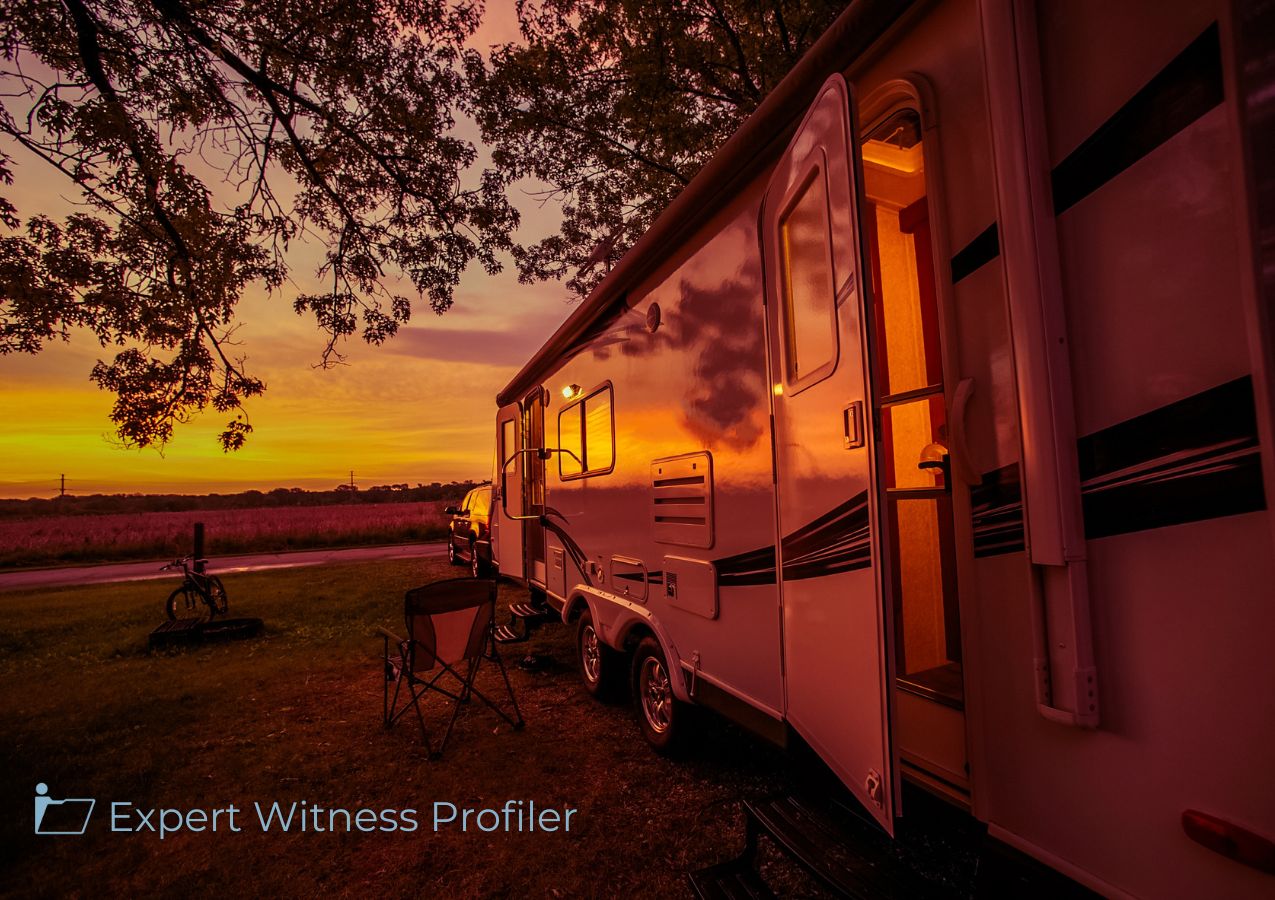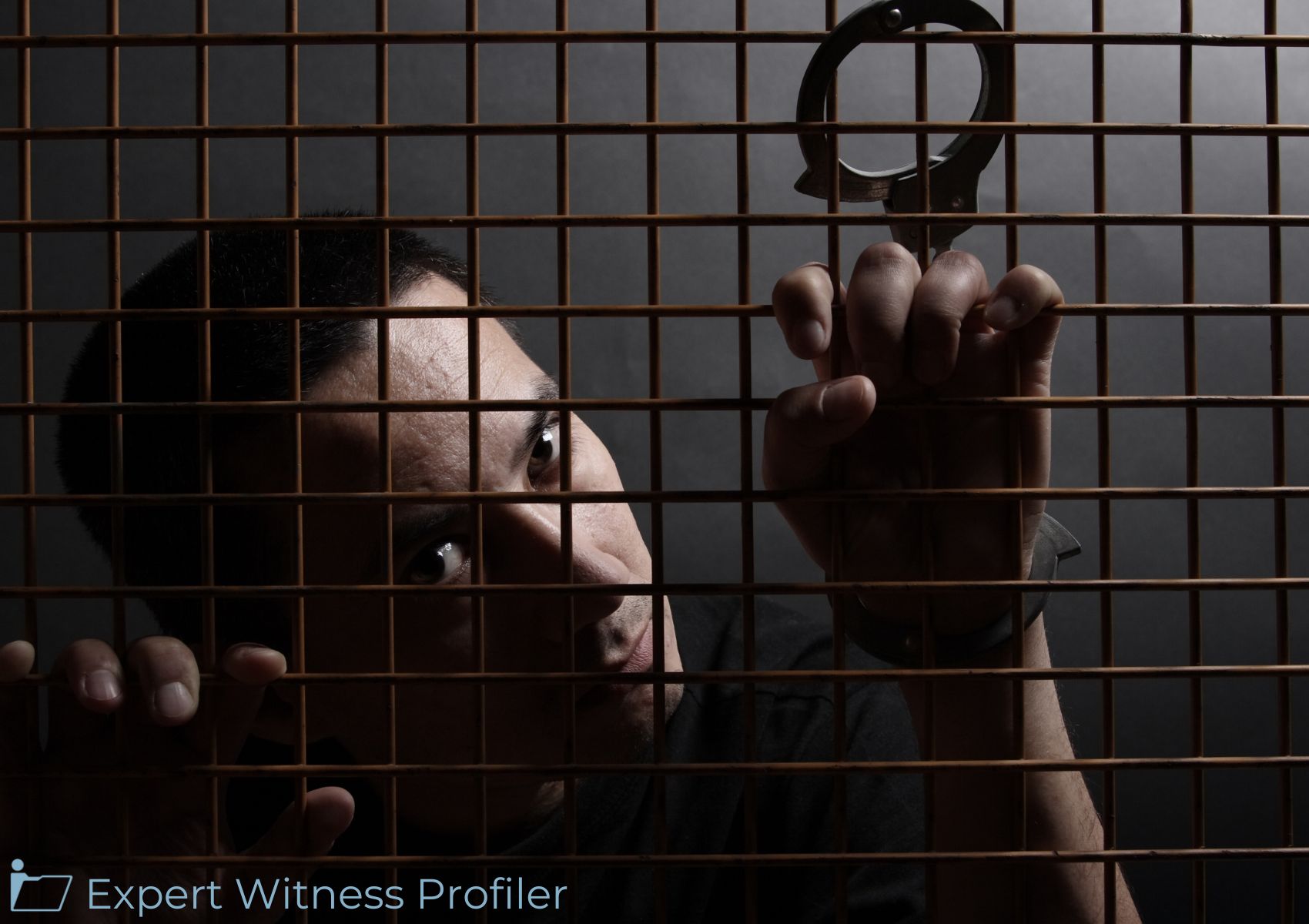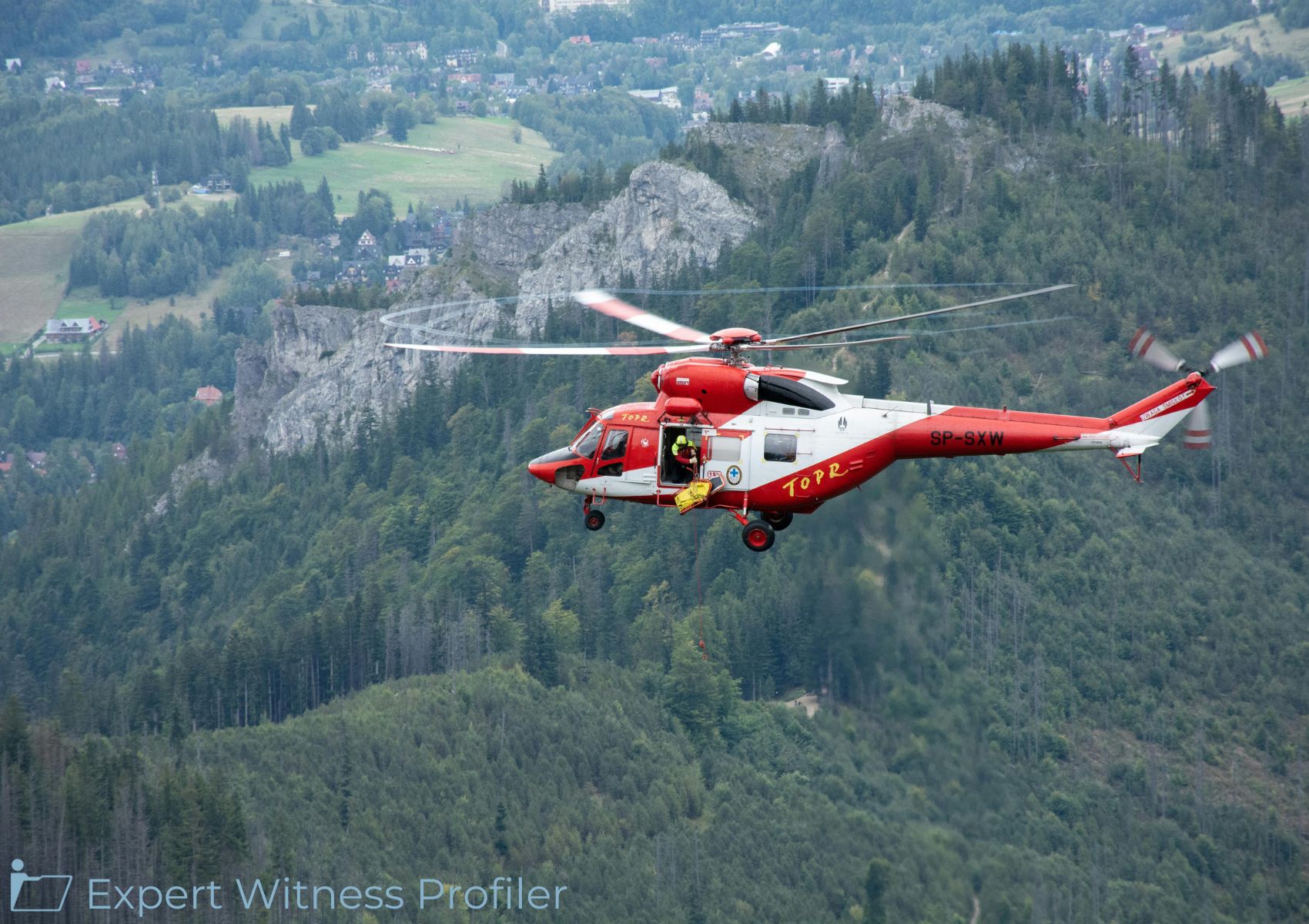Experts could rely on reliable “other sources” and even hearsay to offer their opinions; Court notes before admitting part of Marketing Expert Witness’ testimony
Posted on November 14, 2023 by Expert Witness Profiler
The lawsuit was a trademark infringement action filed by Forest River, Inc. against inTech Trailers, Inc. It sought injunctive relief, damages, costs, attorneys’ fees, and any other appropriate remedies. The legal action arose from inTech’s knowing and intentional infringement of Forest River’s DELLA TERRA trademark and its mountain design trademark, (“Forest River Mountain Design”) (Forest River Mountain Design and DELLA TERRA collectively, the “Forest River Marks”). The claims were made under the Lanham Act, the Indiana Trademark Act, and the common law of the State of Indiana, asserting inTech’s infringement of the Forest River Marks.
Forest River, Inc., a prominent player in the manufacturing of recreational vehicles (“RVs”), cargo trailers, utility trailers, pontoon boats, and buses, among other products, had utilized the Forest River Marks to brand, promote, advertise, market, and sell a new line of its RVs known as the “DELLA TERRA RVs.” Forest River extensively promoted, advertised, marketed, and sold a substantial number of DELLA TERRA RVs under the Forest River Marks. Consequently, the Forest River Marks became distinctive and well-recognized at common law within the industry and among consumers in the United States and Canada.
inTech, a competitor of Forest River in the United States and Canadian markets, was knowledgeable about Forest River’s RV product lines and trademarks, with certain members of its leadership having prior connections with Forest River. Commencing in November 2020, inTech initiated a campaign aimed at selling a new line of RVs by creating confusion among consumers, leading them to believe that its new RVs were DELLA TERRA RVs. inTech branded this new line as “Terra,” a name bearing a confusing similarity to DELLA TERRA, and also incorporated a new mountain design similar to that used by Forest River on its RVs. By using “terra” and the mountain design in various combinations, including with a third mark Forest River had used in the past—OASIS—inTech engaged in actions that traded on the goodwill associated with Forest River’s Forest River Marks.
inTech’s use of “Terra” was found to have infringed Forest River’s trademark rights in DELLA TERRA. Additionally, inTech’s use of its new mountain design was determined to infringe Forest River’s trademark rights in the Forest River Mountain Design. The inclusion of an old Forest River mark, OASIS, along with inTech’s knowledge of Forest River’s RV lines, indicated an intentional, willful, and knowing campaign to create initial interest confusion, closely align with the Forest River Marks, and capitalize on Forest River’s goodwill associated with those marks. inTech’s use of “Terra” and its new mountain design in composite marks was found to infringe composite marks comprising the Forest River Marks. All of these infringements were causing confusion in the RV industry and among consumers, thereby violating the Lanham Act, Indiana state law, and common law, entitling Forest River to seek relief.
Forest River, Inc. (“Forest River”) supported its claims by engaging a survey from an Intellectual Property valuation expert, David Franklyn, who conducted a scientific and controlled double-blind survey involving actual consumers of RV travel trailers. The purpose of the survey was to address the crucial question in the case: whether consumers were likely to be confused by inTech Trailers, Inc.’s (“inTech”) infringement on Forest River’s DELLA TERRA and Mountain Design trademarks. According to Forest River’s expert, David Franklyn, the findings indicated that a legally significant percentage of travel trailer consumers were indeed confused by inTech’s infringement.
In response to Forest River’s claims, inTech presented the testimony of a marketing expert, Thomas Maronick. Forest River claimed that despite not conducting his own survey to directly challenge Franklyn’s results, Maronick attempted to provide opinions that, if admitted, would seek to “inform” the jury about RV consumers and their thought processes. Forest River contended that Maronick lacked expertise specifically in RV consumers. Furthermore, Maronick went beyond his role as an expert witness by placing himself in the position of the Court, evaluating evidence using the wrong standard (the United States Court of Appeals for the Ninth Circuit’s Sleekfast factors), and opining on the legal issue of likelihood of confusion. Additionally, Forest River argued that Maronick’s opinions lacked reliance on any verified data or reliable analysis; he merely repeated data from third-party sources and surveys without evaluating the reliability of those sources or applying methodology critiques to his own references.
Due to Thomas Maronick’s “alleged” lack of reliable methodology and qualifications to opine on the thoughts and behaviors of RV consumers, Forest River, Inc. argued that Maronick’s proffered opinions amounted to nothing more than unsubstantiated and unreliable legal briefing. It was asserted that such ipse dixit opinion testimony was inadmissible under Rule 702 and Daubert. Consequently, Forest River, Inc. sought to exclude the testimony of inTech Trailers, Inc.’s opinion witness, Thomas Maronick.

Marketing Expert Witness
Dr. Thomas Joseph Maronick served as a marketing consultant since 1997, offering guidance on marketing strategy and consumer research issues in litigation. He functioned as an expert witness in more than 150 cases and conducted over 300 survey research projects related to advertising and trademark litigation. Before his consulting role, Maronick served as the director of impact evaluation in the Bureau of Consumer Protection at the Federal Trade Commission from 1980 to 1997. During this time, he acted as the in-house specialist on marketing and survey matters. Maronick has also contributed to publications on the impact of marketing on consumers.
Discussion by the Court
Forest River sought to exclude the anticipated testimony of Maronick. Forest River contended that Maronick’s testimony included inappropriate legal conclusions, particularly in sections 4 and 6 of his report. Forest River argued that Maronick gave conclusions under certain likelihood of confusion factors developed in another circuit and analyzed seven factors known as the “Diamond” factors used to evaluate consumer surveys. In response, InTech clarified that Maronick would not provide an opinion on the likelihood of confusion. The Court interpreted this as a concession, indicating that the set of opinions presented in section 4, even in the context, was no longer in dispute and would not be offered.The Court focused on the opinions in section 6 of Maronick’s report.
InTech had stated that Maronick would only offer his critique of Franklyn’s survey without delving into tracing the seven factors in the reference guide, as courts typically do. He was not required to inform the jury about the judicial evaluation of surveys using these factors. The Court had the responsibility to instruct the jury on weighing evidence, determining witness credibility, and assessing expert opinions.
The reference guide, emphasized as not constituting the law, was deemed inappropriate to present to the jury, as it could be misleading and prejudicial under Rules 702, 704, and 403. It was clarified that the guide was intended for judges and possibly counsel but not for the jury.
Accordingly, the Court held that Maronick had to limit his opinions to the analysis of Franklyn’s survey. However, he was permitted to articulate the factors in evaluating surveys to the extent that they proved to be considerations used by experts in his field for developing or assessing surveys, aligning with his experience. It was noted that many critiques in this section (Section 6) already appeared in Section 7 of his report.
Franklyn conducted a Squirt survey to determine whether consumers of towable travel trailers were likely to be confused by Forest River’s Della Terra and inTech’s Terra marks. The viewed images of travel trailers, were randomly classified as “test” or “control” subjects. Respondents answered two “buffer” questions early on to blind the study’s purpose. Later, they indicated whether the subsequent images were made by, affiliated with, or sponsored by the company that produced the first travel trailer—in this case, Forest River’s Della Terra travel trailer. Franklyn opined that 11 percent of respondents showed confusion, which he considered a significant percentage. He further asserted that a majority of these respondents formed their confusion based on the Terra mark or mountain design.
Forest River argued that Maronick should have conducted a rebuttal survey to address gaps in methodology or data in Franklyn’s survey. However, the Court determined that an opinion witness, in rebuttal, need not necessarily replicate or develop new data. A rebuttal witness may critique another’s opinions without offering alternatives, as long as it aids the jury in deciding a triable issue. Maronick was allowed to base his opinions on Franklyn’s information and add his own insights, provided the information was of a type that experts in his field reasonably rely on. Forest River viewed Maronick’s five critiques of Dr. Franklyn’s survey as unreliable and derivative of his own assertions.
First, Maronick critiqued Franklyn’s survey methodology, asserting that the sample used (the entire U.S. population) was overbroad. Maronick contended that Franklyn should have sampled individuals within the target market for travel trailers, emphasizing that 75 percent of travel trailer purchasers are over age 45 with disposable income above the national average. Franklyn reported that he set quotas in line with census distributions for age, gender, and region. In support of his critique, Maronick referenced a demographic profile study of RV owners conducted by Ipsos in 2020. Ipsos appears to be a near-50-year international company, publicly-traded in the European Union, with nearly 90 markets (including the United States), that collects and compiles data for its clients to make decisions.
The Court found that Maronick’s opinion drew on reputable data and explained the method for conducting a reliable survey, contributing to the jury’s understanding of the importance of starting with a proper sample. While Forest River raised concerns about the weight of his opinion, the Court deemed these concerns relevant to the weight rather than the admissibility of the opinion.
Second, Maronick opined that Franklyn should have used a broader array of images of competing trademarks instead of just a single control image (inTech Sol) and buffer image (Jayco Eagle). According to Maronick, using only these two images increased the likelihood of finding an association between Forest River’s mark and inTech’s mark. Franklyn employed a two-room format in his survey, showing respondents the Forest River Della Terra model in room one and two other images in room two, either the inTech Terra travel trailer (test group) or the Sol RV (control group). Maronick argued that showing these sequential images one at a time, rather than in an array, could skew responses substantially higher. Forest River contended that Maronick’s opinions lacked data or methodology because he didn’t conduct his own survey, characterizing them as merely his say-so. However, the Court disagreed, noting that while Forest River might not agree with the method or data, these were matters for cross-examination and argument at trial, not questions of admissibility under Rule 702. The Court recognized that experts could rely on reliable other sources and even hearsay to offer their opinions, citing United States v. Conn, 297 F.3d 548.
Third, Maronick opined that Franklyn’s use of the inTech Sol RV as the control image was so different from the Terra unit that it signaled to respondents an association between the Della Terra and Terra. Maronick referred to a standard in survey methodology stating that a control should share as many characteristics with the experimental stimulus as possible, except for the characteristic being assessed. He cited survey and industry authorities to support this step in his method, specifying differences in size and configuration that, in his view, skewed the results. Maronick’s experience in developing and conducting surveys, combined with industry sources, provided a reliable basis for his critique. While Forest River may challenge the credibility of his opinion during cross-examination and argument, its concerns were deemed suitable for trial rather than questions of admissibility under Rule 702.
Fourth, Maronick opined that the use of two “irrelevant” questions between respondents’ viewing of the Della Terra image and the images of the Terra, Sol, and Jayco units caused respondents to “guess.” He characterized the intervening questions as a modification to the Squirt survey format. Maronick supported his opinion by referencing industry support, a factual basis within Franklyn’s survey method, facts within the questions and responses, and the logical concern that this method might prompt specific responses. His method included a check-and-balance to frame survey questions clearly and precisely, avoiding bias and using control questions when appropriate. Maronick’s experience and the factual basis he provided spoke not only to his method but also to an issue that the jury might reasonably consider when evaluating the weight to give the survey. Forest River’s concerns were deemed to pertain more to the weight of Maronick’s critique rather than its admissibility.
Fifth, Maronick disagreed with Franklyn regarding whether a 9 percent net difference of survey respondents finding confusion between the Della Terra and Terra represented a significant likelihood of confusion. While Maronick couldn’t recall if his critique drew from the entirety of Franklyn’s analysis or a specific section, the Court considered this a factual gap suitable for cross-examination rather than outright exclusion. Maronick provided a formula for testing statistical significance, although he didn’t include the outcome in his report. Despite not being asked in deposition whether he ran the formula or the results, the Court noted that he offered a basis and method for testing his conclusion, making it testable. Maronick’s opinion, built on a method for adjudging surveys, a formula for statistical significance, data from Franklyn’s survey, and his experience in conducting 300 surveys, aimed to assist the jury in understanding not just the survey but also what it might convey to a factfinder. The Court concluded that his opinion was not inadmissible under Daubert.
Held
The Court granted Forest River’s motion to exclude Maronick’s opinion concerning his conceded opinions and those in section 4 of his report. However, the Court denied the motion as to Maronick’s critique of Franklyn’s survey, particularly his analysis of the five flaws and conclusion derived from the survey.
Key Takeaways:
This opinion addresses the admissibility of expert witness testimony under Daubert and Rule 702. The Court denies most of Forest River’s motion to exclude Intech’s expert, Maronick. The Court finds that Maronick is qualified based on his credentials and experience in marketing research and surveys. His critiques of the opposing expert’s survey methodology are admissible even without conducting his own survey. An expert can rely on outside sources and data reasonably relied upon in the field to critique another expert’s methodology. Any flaws in the data go to weight not admissibility. Maronick tied his critiques to his experience and industry practices for reliable survey methods. The Court excludes only his conceded opinions on likelihood of confusion factors and his discussion of how judges assess survey factors. Experts cannot opine on ultimate legal conclusions. But experts can utilize reliable principles and methods even if their data has gaps, as cross-examination exposes doubts in the testimony for the jury to weigh. The judge ensures the methodology and data are connected to the opinion, not that the opinion is flawless.





